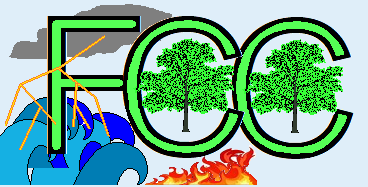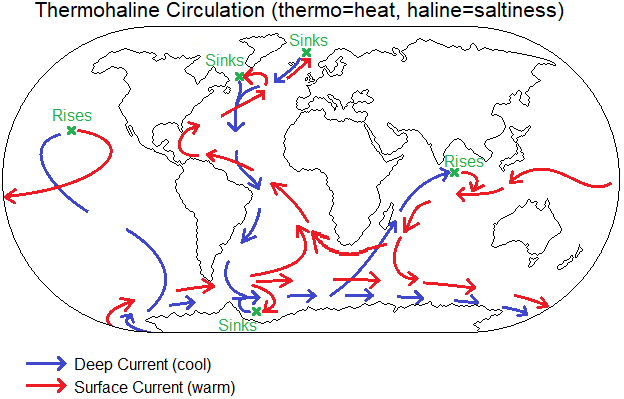






The Science
Data Sources:
CO2 variations:
MacFarling Meure et al. 2006 Scripps CO2 Program
Global temperature:
IPCC AR6 report UK Met Office Hadley Centre US NASA Goddard Institute US NOAA Centres for Environmental Information
There is so much evidence of climate change that a scientific analysis does not seem needed. However, since there is a solid explanation, then The Science Of Climate Change is set out below.


The basic tool that has laid the foundation, is the examination of ice cores from the Arctic. As new snow falls on settled snow, the weight compresses the settled snow, which becomes ice. This ice traps air bubbles which contain air from the time the snow became ice. As this builds up, this creates a record of the atmosphere over hundreds of thousands of years. The content of the air varies with temperature, so we then have records of temperature and air contents going back over millenia.
Drilling is reasonably straightforward, even if sometimes done in difficult weather. A rotating metal tube is pushed down into the ice and as it cuts a core of ice is left inside the drill. This then breaks off and is carefully labelled and stored.
To get the cores required to give the data for a long time period, therefore, requires many cycles of preparing drill, lowering it, cutting, raising, removing the drilled core, and accurately labelling. Not to mention placing the drill precisely over the centre of the previous hole for the next cycle.
There is a lot of information about drilling ice cores here.
Examining the data
We have data from the ice cores and other sources which enables us to determine the level of carbon dioxide and the temperature, going back for 800,000 years. The graph of those is below:

Greenhouse gasses like carbon dioxide keep the planet from becoming an icy waste. As the amount of carbon dioxide increases the temperature goes up, and when the amount falls, the temperature falls.

If we look more closely at the carbon dioxide level:

The carbon dioxide level has been between 200 and 300 part per million for 800,000 years. But since we started burning fossil fuels (coal, gas and oil) in the Industrial Revolution, the level has rocketed. Today it is over 420. Estimates of the amount of carbon dioxide needed to do that and the amount that humanity has added by burning fossil fuels indicate that the rise must be due to our activity.
This is why we must stop burning fossil fuels. Various "soft" options have been tried, and the result of those is shown below:

Click here to see the NASA global warming model.
As general air temperature rises, the warmer air can hold more water and so it takes up more moisture from the oceans it passes over and dries the land it passes over also. This causes:
> Heatwaves in some areas, causing wildfires, drought, water shortage and failed crops,
> Severe storms when the extra water falls,
> Floods, flash floods and sea surges - city water systems can't cope and salt water wrecks farmland,
> Acidic oceans - the air warms the sea so that the water dissolves more CO2 making oceans more acidic,
There are also some tipping points caused by feedback. For example:
> The Northern permafrost is melting > releasing methane (a potent greenhouse gas) > causing further warming > accelerating the melting of more permafrost.
> Forest fires > fewer trees > less CO2 absorbed > more warming > more fires.
> Melting ice sheet > less bright surface > more light energy absorbed > more ice melts.
> Ocean warming > fewer clouds > less sunshine reflected back into space > more atmospheric warming > more ocean warming : (Earth has become 0.5 of 1 per cent less reflective since 2017).
> Ocean warming > greatly increased urchin reproduction > reduced kelp forests > less carbon fixation > less absorption of carbon from the air > increased temperature > increased ocean warming.
Global warming combined with excess carbon dioxide are making significant changes to the water in our oceans.
The primary change is that the water is warmer, so more acidic (when carbon dioxide dissolves in water, some of it reacts to form carbonic acid: CO2+H2O->H2CO3), and deoxygenated.
The secondary changes, the changes that happen because the primary changes are happening, are:
Winds move surface currents
Temperature and saltiness (salinity) move deep currents.

The result is that the Gulf stream is slower and might stop.
Climate change could stop the Thermohaline Circulation. This would increase major floods and storms, causing more severe weather and causing a collapse of plankton stocks or oxygen depletion. Oxygen depletion is a probable cause of past mass extinction events. If the oxygen is depleted, not only is there less to breathe, but bacteria digestion changes and produces methane (green house gas) and hydrogen sulphide (rotten eggs smell). This could lead to hydrogen sulphide poisoning of the atmosphere.